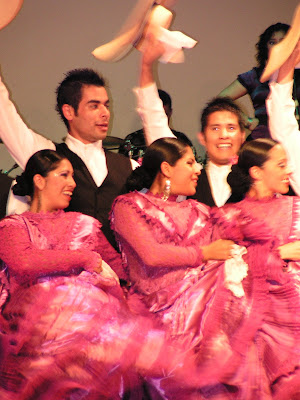I'm woefully behind on my chronicle of the Peru tour. I did several touristy things before I left Lima. On an afternoon when the performances were over early, Gustavo and I went first to a restaurant for his favorite lomo saltado, beef stir-fry. French fries are one of the ingredients. It was delicious. Then we went to the Museo Larco. This was an incredible museum of Pre-Columbian art, well worth the high admission fee. Unfortunately, this was on a day when I forgot the memory card in my camera. Here is somebody else's video of it:
On a different afternoon, after four performances, Gustavo and I went to downtown Lima to see the Museum of the Convent of San Francisco de Asis.
Discovered in 1943, they countain thousand of skulls and bones, serving as a burial-place until 1808, when the city cemetery was opened outside Lima. It is estimated that 25,000 bodies were laid to rest there; the crypts, build of bricks and mortar are very solid and have stood up well the earthquakes, it is also believe that existed secret passageways connected to the Cathedral and the Tribunal of the Holy Inquisition.
Another tourist attraction in Lima is the Parque de la Reserva. The water fountain park is lit up at night. Here I am with my friend (and tour manager) Gustavo:
 This next fountain is a maze. People run to the middle when the water is turned off. The jets come on intermittently, so the trick is to get out without getting wet. I'd love to try that in warmer weather. It wasn't that cold the evening we went, but I had no dry clothes with me. They even have a changing room for visitors who plan ahead.
This next fountain is a maze. People run to the middle when the water is turned off. The jets come on intermittently, so the trick is to get out without getting wet. I'd love to try that in warmer weather. It wasn't that cold the evening we went, but I had no dry clothes with me. They even have a changing room for visitors who plan ahead.

I barely got any drops of water on me in the tunnel of water.
We watched the sound and laser light show. Very impressive!
On the same evening, we went to Las Brisas del Titicaca, a wonderful folkdance show with music and dances from around Peru.





Next, I'll show pictures of Los Lobos de Callao. Guess what that is? Here's a hint, it's not wolves.







